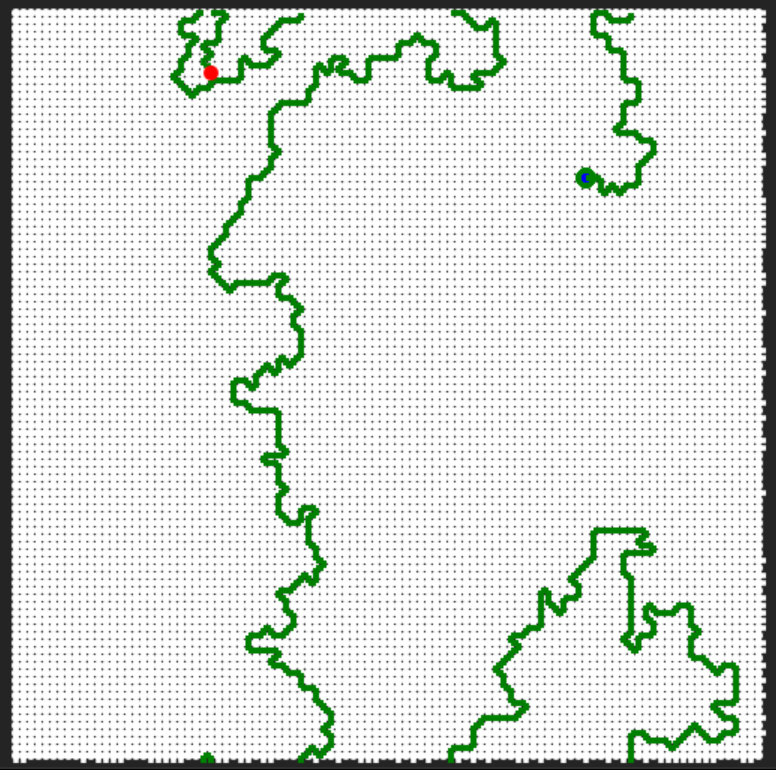As an offshoot of a different discussion I got curious about (uniform) random spanning trees on grid graphs (torus graphs in particular, to avoid having to think about edge effects) and what their diameters would look like. Perhaps unsurprisingly, the result looks much like a random walk:

Some rough computation on graphs up to size 320 suggests that the average length of the longest path on an $n\times n$ torus is of order $n^C$ for $C\approx 1.26$; it seems distinctly larger than $5/4$, but beyond that it's difficult to discern.
I was able to find a little research on the expected diameter of random spanning trees for some graphs, particularly this article from Chung, Horn, and Lu; unfortunately, their results depend on a degree that increases with $n$ and don't seem to apply to the fixed-degree case.
This is such a natural question that it feels like it should have come up before, in a context of random walks or percolation theory or similar; does anyone know of any references or information on this particular question?
